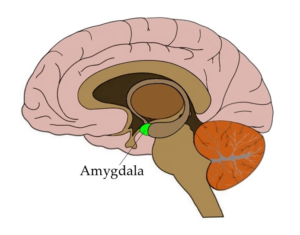Combating Racism – Awareness of Bias
Explicit Biases
Explicit biases are those conscious attitudes and beliefs we have about a person, a group, or a situation. We are aware of these biases. An example of an explicit bias would be, “I hate Brussels sprouts.” (I don’t actually but I’m using that as an example) You can provide justifications for why you hate them, you can own it, and you are aware of your bias against Brussels sprouts.
Implicit Biases
Everyone has implicit biases, regardless of race, ethnicity, gender or age. Implicit bias are those unconscious (unintentional) attitudes and beliefs we have about a person, a group or a situation. They affect our understanding, actions and decisions in an unconscious manner. The vast majority of our cognitive processing occurs outside of our conscious awareness. Many of the mental associations that affect how we perceive and act are operating implicitly (unconsciously).
Operating outside of our conscious awareness, implicit biases can challenge the most well-intentioned and egalitarian-minded individuals, which means they can result in actions and outcomes that do not necessarily align with explicit beliefs and stated intentions. Even individuals who profess egalitarian intentions and try to treat all individuals fairly can still unknowingly act in ways that reflect their implicit (rather than explicit) biases. We aren’t even aware they exist and so we don’t realize how they influence us.
Our automatic unconscious associations can shape our interpretation of situations. For example, extensive research has documented pervasive implicit associations that link Blacks, particularly males, to stereotypes such as aggression, criminality or danger, even when explicit beliefs contradict these views. Then we have an unconscious tendency to seek information that supports our preexisting beliefs, even when evidence exists to the contrary.
HOW DO WE LEARN BIAS?
Our brains are hardwired
 First, our brains are hard wired for it. Psychologists estimate that our brains can process approximately 11 million bits of information every second. If we had to slowly process everything that comes at us, we would quickly become overwhelmed. Our brains are created to make us more efficient.
First, our brains are hard wired for it. Psychologists estimate that our brains can process approximately 11 million bits of information every second. If we had to slowly process everything that comes at us, we would quickly become overwhelmed. Our brains are created to make us more efficient.
All of our sensory data immediately goes to our Amygdala, the fast processor of sensory information in our brains. The Amygdala helps to store memories of events and emotions so we can recognize similar events in the future. It’s also our fear center. When info comes in, we immediately code it: What’s good? What’s bad? What’s a threat? What’s not a threat?
We rely on fast processing of sensory information. We don’t take time to ask “Is this like me or not?” Our brain doesn’t ask, “Is this a fair judgment?” or “Am I being accurate in how I’m judging this situation?”
Our experiences
Our environment and our experiences—anything we take in through our senses – program our biases.
For example: Societal messages teach us that when we’re older, we start to fall apart. Our culture holds a negative stereotype about the elderly. Think of all the TV commercials directed toward our elderly population. They deal with plastic surgery, anti-aging creams, etc. “How to look years younger.” “Don’t let your gray hair show.” “Use these creams to prevent wrinkles.” We get unconscious programming from society that getting old is not a good thing.
Our emotions are always linked to associations. The less time we have to think, the more likely we are to rely on biased associations and stereotypes. When we are tired, we make quick judgments and afterward we use our cognitive component to examine all the variables and process, justify and rationalize.
Imagine that you made the assumption that someone you worked with had an “attitude.” Once you make that assumption, which was clearly based on the person’s behavior, what do you do? Most people would adjust their behavior. Our behaviors tend to reflect the automatic bias that we make.
While there are many ways in which our intrinsic biases can be helpful, there are also ways in which they are problematic.
Benefits
- They help us to more easily classify and organize the world around us.
- We are able to process information when new situations require a quick (although not necessarily accurate) judgment.
- Implicit biases help us navigate repeat situations, providing predictability.
Limitations
- Implicit biases are usually based only on a few traits.
- We never see beyond the stereotype (e.g., gender, skin color, etc).
- We make broad brush assumptions about people.
- They create stress and negative emotions in those who are stereotyped.
- Implicit biases can lead to racism, prejudice, discrimination and marginalization.
Tests
So now I’d like you to take a few “tests.”
1) Look at this woman:

If you don’t know who she is, click here
When she first appeared on stage, there wasn’t a person who didn’t stereotype her, first based on how she looked, then on how she behaved. We knew exactly what was going to happen: we assumed negative outcomes. But when she began to sing, we were shocked and surprised. We had been 100% wrong. Unconscious biases we get through societal programming and the fast processing of our brains is not always accurate and can lead us to judge people unfairly based only one what we see.
Next:
2) When you hear the word “bully,” what is the first, most immediate image you conjure up in your mind? What does the bully look like? Who do you see?
The image used to be a young male, maybe slightly overweight, picking on a younger boy. Now girls are being mean, nasty and sometimes physically abusive to other girls. Our definition of “bully” has expanded.
3) If I tell you that I saw a married couple, clearly in love, sitting more than 6 feet from us in a restaurant last night, what image comes to your mind? Do you see a heterosexual couple? Do you see two men or two women enjoying dinner together?
These are examples of the ways the amygdala functions.
One of the best-known scientific studies done to show that implicit bias can be counteracted through strategic effort was done with orchestra auditions. In the 1970’s, the top 5 US orchestras included only 5% female musicians. Selections were based on how the person looked rather than how they played. In the 1980’s that number grew to slightly less than 12%. But in 2000, auditions began to be “blind.” They were conducted behind a curtain with carpeted floors so the judges could not hear the way the musician walked. Decisions were based on talent when the opportunities for bias were limited. After 2000, 37% of the top 5 orchestras were women.
CHANGING IMPLICIT BIASES
How can we better align our implicit biases with the explicit values we uphold? There are several ways to make your unconscious more conscious.
Awareness
Conscious awareness of one’s own implicit biases is a critical first step for counteracting their influences.
With implicit biases operating outside of our conscious awareness, it might seem hard to identify any that we hold. Fortunately, researchers have identified several approaches for assessing these unconscious associations. The Implicit Association Test (IAT), a free online test that debuted in 1998, measures the relative strength of associations between pairs of concepts and is designed to tap into unconscious associations. Extensive research has upheld the IAT as a valid and reliable measure of implicit associations.
If you are interested in taking the IAT test to check for implicit racial biases, click here.
Another test for those who are interested in implicit social cognition – thoughts and feelings outside of conscious awareness and control – was developed in 1998 by three scientists. The goal is to educate the public about hidden biases and provide a “virtual laboratory” for collecting data on the internet. If you are interested in taking the test, click here.
Intergroup contact
Another approach to changing implicit associations is to meaningfully engage with individuals whose identities (e.g., race, gender, ethnicity, religion) differ from your own. By getting to know people who differ from you on a real, personal level, you can begin to build new associations about the groups those individuals represent and thereby break down existing implicit biases.
Exposure to counter-stereotypical exemplars
Counter-stereotypical individuals are those who contradict widely held stereotypes. Examples might include male nurses, female scientists, Black judges, and others who defy stereotypes. Exposure to these exemplars can help individuals to begin to automatically override their preexisting biases. Some scholars suggest that photographs and décor that show counter-stereotypical exemplars can activate new mental associations. Today Kamala Harris is an example of a counter-stereotypical exemplar.
Data Collection
Another strategy for mitigating implicit biases is data collection. Gathering meaningful data can bring to light trends and patterns in disparate treatment of individuals that might otherwise go unnoticed.
Process before judging
Unconscious associations operate extremely quickly. As a result, in circumstances where individuals are in a hurry or have a lot on their minds, their brains tend to rely on automatic implicit associations. Research suggests that reducing cognitive overload and allowing more time to process information can lead to less biased decision making.
In Conclusion:
While implicit biases can affect any moment of decision making, these unconscious associations are not character flaws or other indicators of whether someone is a “good person” or not. Having the ability to make lightning-fast associations, such as knowing that a red light means stop, is crucial. But when we identify and reflect on the implicit biases we hold, we can see that our life experiences may unconsciously shape our perceptions of others in way that we may or may not consciously desire. If the latter, we can take action to mitigate the negative influences of these associations. Accumulated research evidence indicates that implicit bias powerfully explains the persistence of many societal inequities, such as criminal justice, healthcare and employment. The real-life implications of implicit biases can create invisible barriers to opportunity and achievement – a stark contrast to the values and intentions of most of us. Thus, I encourage you to identify any discrepancies that may exist between your conscious ideals and unconscious associations so you can mitigate the effects of those implicit biases.
Several YouTube videos can expand your understanding of unconscious biases:
How to Outsmart Your Own Unconscious Biases by Valerie Alexander, DEO of Goalkeeper Media
Much of the information for this newsletter was taken from Implicit bias what teachers should know.pdf